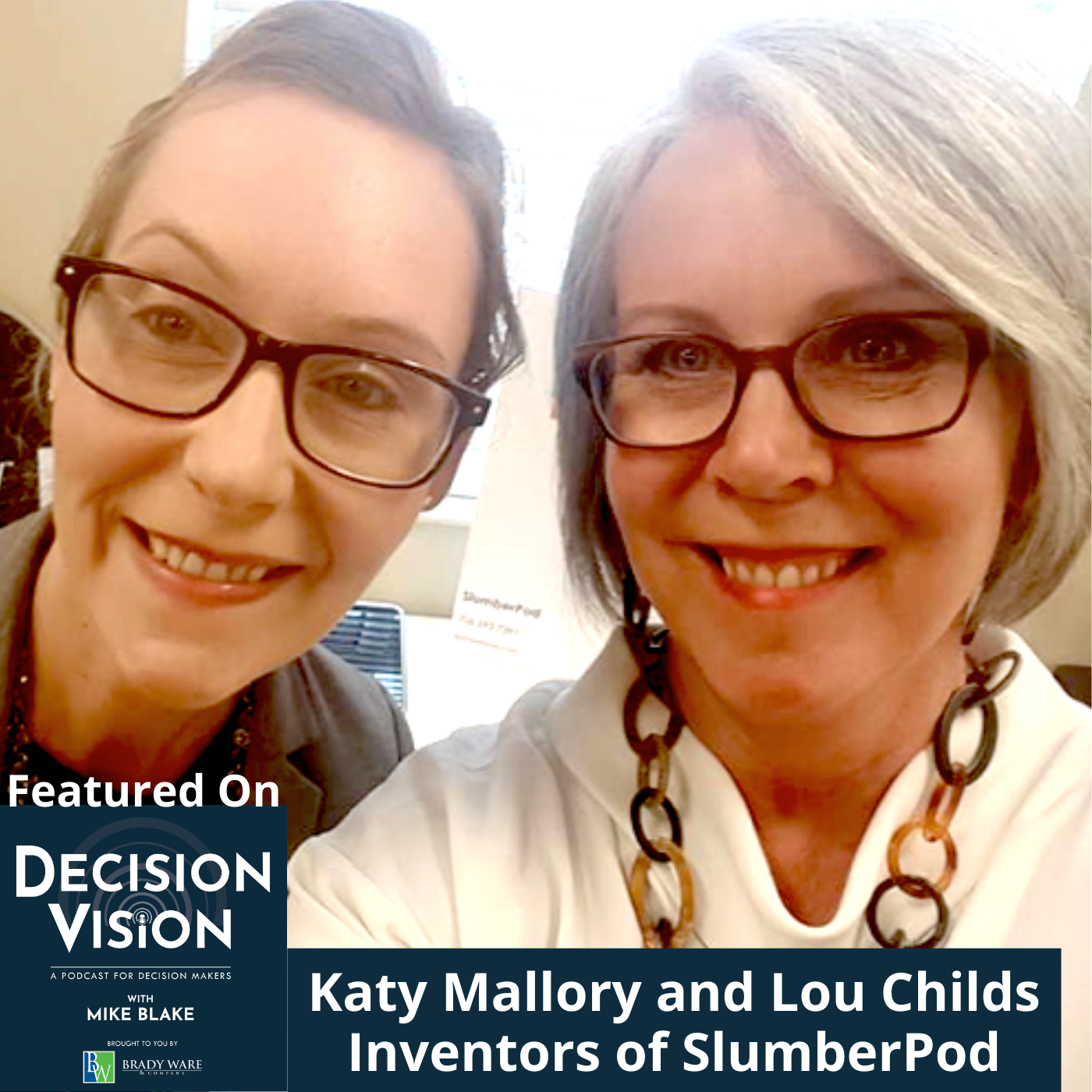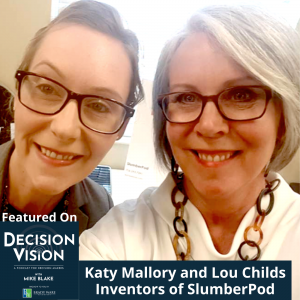

Why We Decided to Pitch our Company on the TV Show “Shark Tank,” with Katy Mallory and Lou Childs
Lou Childs: [00:00:00] First off, getting on the show is like a needle in a haystack. So, 40,000 people apply every year.
Mike Blake: [00:00:09] Forty thousand. Wow.
Lou Childs: [00:00:11] Yes. Every year. So, when we realized when we went on Amazon and after the first five months of being on the market, we had $150,000 in sales and we said, “Why not? You know, we’re crazy. We really do love to have a lot of fun.” As those of you who have seen our pitch can see that we’re in pink pajamas with shark slippers. But we just said, “Hey, what the heck? We’ve got Delta Miles, let’s pick a spot and go stand in line and be in the casting call.” And that’s exactly what we did.
Lou Childs: [00:00:54] Katy is so good at public speaking. I’m a great sidekick and I’m a lot of fun. Of course, during the pitch, I forget my lines and the producers thought, like, that was hilarious. But I think we’re endearing. I think that people kind of feel once they get to know us, that they want to be our friend. So, it was easy. It was easy to just say, “Hey, what do we got to lose? We’ve got a great story and let’s go have some fun.” And that’s what we did. And I think it really paid off that we had that attitude.
Katy Mallory: [00:01:34] My mom mentioned, Mike, that we had some sales and I wanted to expand on that a little bit. Because from watching the show – which I think we’ve both seen every single episode over the last 11 years – we’ve seen that when companies have no revenue or their only revenue is Kickstarter or Indiegogo campaigns, they really get the ninth degree from the Sharks. Because the Sharks don’t feel like there’s enough to go on to feel confident investing. So, having that revenue and not just $5,000 of revenue – but, you know, I think when we applied, would you say, mama, it was more than 200 or 150 or something like that when we first applied? And then, by the time we recorded we had $600,000 or 650,000 in revenue in just a couple of months. So, that made us feel confident.
Katy Mallory: [00:02:27] Of course, there is the exception of the comp fee, which is a brand that Barbara Corcoran invested in that was pre-revenue, but she just really felt like those entrepreneurs were magnetic and she she went out on a limb and invested in them. But, historically, that’s not the case.
SlumberPod
The idea for SlumberPod started in December 2014 when Katy and her husband and baby were visiting Katy’s mother (Lou) for the winter holidays. Because it was a packed house, the three had to share a room. The baby woke up two nights in a row—seeing her parents across the room—and refused to go back to sleep. Sleep-deprived and frustrated, Katy and her family went home a day early. Thing was … their baby was rarely a bad sleeper at home.
Katy scoured the internet for something she could bring on trips to provide her baby a private, dark place to sleep. When she didn’t find anything that fit the bill, she (like many others) resorted to homemade solutions to provide a visual barrier between her and her baby. The homemade solution worked but wasn’t safe, especially private or easy to set up.
While Katy was on maternity leave with twins in the spring of 2016, she and Lou decided it was time to create a safe, easy and portable solution to help make vacations more restful and fun for everyone—and SlumberPod was born!
They’ve had a ton of support and encouragement by way of friends and family, product designers, fellow entrepreneurs, advisors, and are proud to bring SlumberPod to market.
Between the two of them, Katy and Lou have nine children and lots of experience traveling with them.
Company website | Katy Mallory LinkedIn | Lou Childs LinkedIn
Find their full Decision Vision interview here.
The “One Minute Interview” series is produced by John Ray and in the North Fulton studio of Business RadioX® in Alpharetta. You can find the full archive of shows by following this link.
Renasant Bank has humble roots, starting in 1904 as a $100,000 bank in a Lee County, Mississippi, bakery. Since then, Renasant has grown to become one of the Southeast’s strongest financial institutions with over $13 billion in assets and more than 190 banking, lending, wealth management and financial services offices in Mississippi, Alabama, Tennessee, Georgia and Florida. All of Renasant’s success stems from each of their banker’s commitment to investing in their communities as a way of better understanding the people they serve. At Renasant Bank, they understand you because they work and live alongside you every day.















